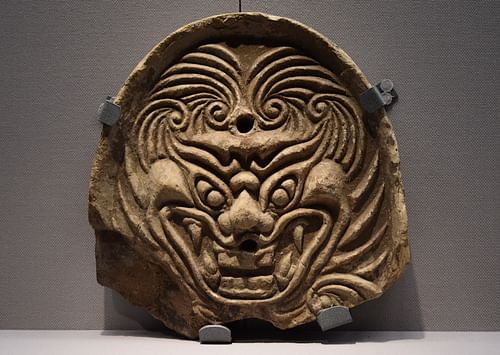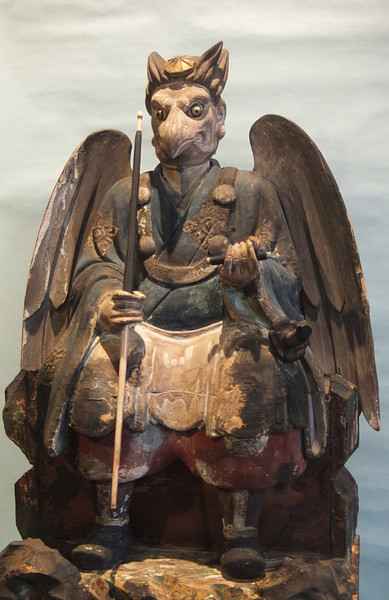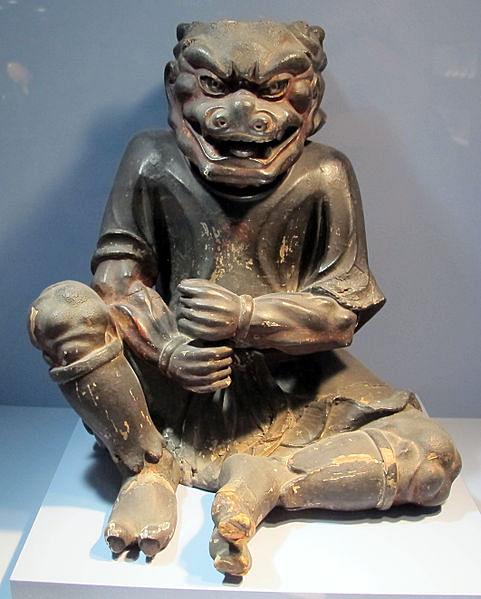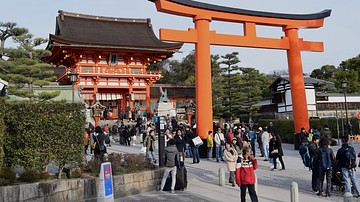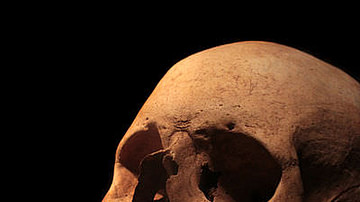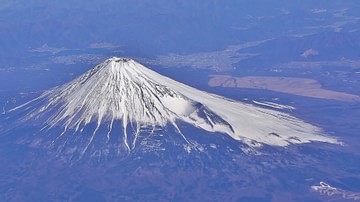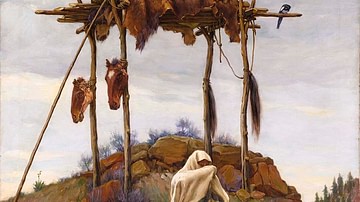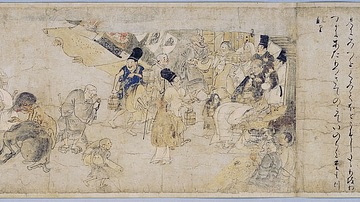Ghosts (obake or yurei) appear in ancient Japanese folklore and literature, usually in moral tales designed to both warn and entertain but they were also an important element of ancestor worship. If the deceased members of a family were not honoured, they could bring havoc to the daily lives of those who had forgotten them. There was not much one could do to avoid ghosts, demons, and goblins, and the only safeguard against harm was prayer or relying on the protection of the Shinto gods or Buddha. Still, these spirits are not always evil and their powers can be negated; sometimes they can even be converted to do good if subjected to the proper spells and rituals.
Origins
A belief in ghosts in Japan goes back to the indigenous Ainu people who considered spirits a manifestation of a person's evil side. Known as takup, they could appear in dreams and pass on messages from the dead or lead the individual on a spiritual journey. It was thought that if while undertaking such a journey the sleeper awoke before 'returning' to their body then they would die.
The belief in spirits or kami, such an integral part of the Shinto religion, also has a long history in Japan. Prominent or unusual natural features such as mountains, springs, and odd-shaped rocks are considered the manifestation of a kami, often even a prominent god. Buddhism too, with its preoccupation with the afterlife, also brought to Japan stories from China of ghosts and goblins, many of whom personified the temptations and obstacles to reaching enlightenment. Clearly, then, in Japanese culture there was, and for many there still is, an entirely distinct world from that of the living, and ghosts are the medium by which these two worlds occasionally come into contact with each other.
Ancestor Ghosts
In ancient Japan, individuals, after death, were thought to be transformed into spirits, and it was important for the living to honour the spirits of their ancestors. This could be done by prayers and small offerings at a shrine built for that purpose in the family home. If the spirits of ancestors were not so honoured and remembered, then they could become 'hungry spirits' or gaki (also spelt gakki) who are perpetually hungry and thirsty, have huge bellies, and torment the living by bringing bad luck and illnesses. At the same time, ancestors could help protect the fortunes of the living; stories of ghosts of dead mothers caring for their still living children were particularly common.
Tengu
Forests were considered the home of goblins known as tengu who cast spells on those who do not watch their step. They have the body of a man with wings and a menacing beak on their red face. Tengu masks are often worn today during Shinto festivals when individuals perform their role as temple guardians. Tengu are particularly partial to abducting children and waylaying Buddhist priests, tempting them away from the faith and converting them to Shintoism.
Kappa
Even water sources had their own supernatural element in the water sprites or kappa. They were envisioned as small, childlike imps. They have a distinctive appearance being covered in blue-green scales and webbed feet and hands. Even more bizarre is the hollow in the tops of their heads in which they keep water as sustenance for when they are distant from a river. Eating their victims and especially partial to the liver, they can, in contrast, sometimes offer help to the passerby. The best way to avoid harm is to offer the kappa a very low bow, he will then return the honour and so spill the water from his head, thus becoming too weak to do any mischief.
Oni
Oni, or demons, are creatures just about everywhere who, without morals, cause mischief and disaster, although, they can be converted to the right path. The number of oni was greatly increased following the introduction of Buddhism into Japan from the 6th century CE onwards. There are two types of oni, those which dwell in the underworld and those in the heavens. The former type usually have a red or green body, the head of a horse or ox, and ride a flaming chariot. Their job is to take souls down to hell. Other oni have no physical form but can be heard when they speak, sing or whistle. Oni were famed for their swordsmanship, and none more so than their king Sojobo, who trained the famous 12th-century CE warrior Minamoto no Yoshitsune in the art.
Some oni were associated with specific diseases, some were thought to possess animals which can then possess people (especially the fox or racoon), and it was believed that women ruled by jealousy or without feelings were transformed into demons. Oni and most other supernatural beings can sometimes offer gifts and teach people skills, so too, they can be banished or eliminated by spells and rituals performed by those in the know.
Fallen Warriors
Another group of ghosts was warriors or even entire armies killed in battle. One such episode is the disastrous defeat of the Taira clan and the young Emperor Antoku at the Battle of Dannoura in 1185 CE during the Genpei War. A ghost of a samurai warrior was said to have reappeared at the site and asked for a blind lute (biwa) player called Hoichi to play for him the Heike Monogatari, which tells the story of the battle. Only after several nights of playing, when an abbot followed the lute player, was it discovered that Hoichi, playing in the rain by a memorial stone for the fallen, had, in fact, no audience.
Mistreated Individuals
Another category of spirits is those individuals who suffered some sort of injustice during their lives. Perhaps the most famous example of these 'restless' spirits is the scholar Sugawara no Michizane, aka Tenjin (845-903 CE), who was badly treated at court and exiled. A wave of devastating fires and plague shortly after his death hit the imperial capital which many took as a sign of revenge by Tenjin. The impressive Kitano Temmangu shrine at Kyoto was built in 905 CE in his honour, and Tenjin became the patron god of scholarship and education. The story illustrates the common theme of Japanese ghosts that they were not necessarily unjustly wicked and in most cases could be appeased if given appropriate honours.
Other Types of Ghosts
Besides the obvious haunts of ghosts such as temples and graveyards, there were several other places besides forests and rivers where one might be unfortunate enough to come across a malevolent ghost. Mariners of the world are noted for their superstitions, and one type of ghost in Japan sometimes followed fishermen and ships at sea. The ghost would demand from the sailors a bucket without a bottom, and if they were not given this offering, they would flood the boat. On land, meanwhile, the spirits of those who died in the mountains were thought to haunt the slopes and entice climbers to their doom. Clearly, for the ancient Japanese the world was a potentially dangerous place with ghouls and goblins around every corner and you had to have your wits about you to make sure you were not ensnared in their schemes to upset the natural order of everyday life.
This content was made possible with generous support from the Great Britain Sasakawa Foundation.
